Mystery History: Do you recognize this vintage Corvette racer?
Larry Carpenter has a long history with Chevrolet Corvettes, stretching back more than 40 years. The backstory of one of his more recent purchases, however, is still clouded in mystery. This ’56 was a former drag racer and certainly must have had a colorful past, but Carpenter, of Ogden, Utah, hasn’t had much luck digging into its quarter-mile exploits. Perhaps you or someone you know remembers seeing this straight-axle Corvette competing in Modified Sports Car classes in the ’60s and can help shed some light on details. Here’s a look:
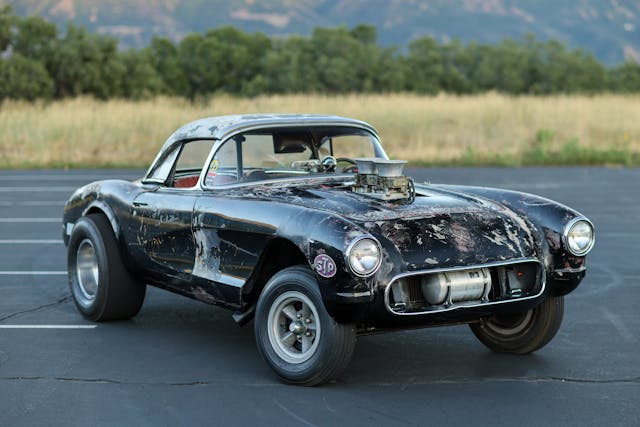
Carpenter’s love of Corvettes goes back to his teens. “My dad was a Ford man,” said Carpenter, who let brand loyalty skip a generation. “In high school, I decided I wanted a Corvette.” His father thought that Corvettes were hard to work on. We suppose anyone who’s tried to service a big-block Corvette would have a tough time arguing. Despite his father’s protests, Carpenter bought his first Corvette just before his senior year in high school. It was a 1964 convertible with a 365-horsepower L76 327.
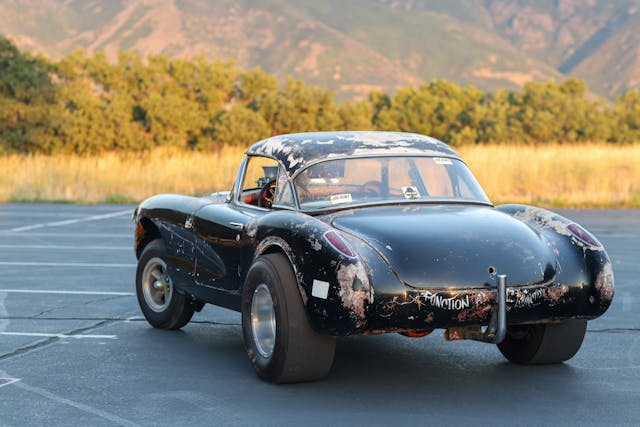
“I’ve probably had about 35 different Corvettes.” Carpenter admitted. His collection was never too large though, because his desire for a different Corvette would necessitate selling one to free up the room and the money to grab another. Today though, he’s less interested in selling any of his current fleet to acquire a new one. Over the past 40 years or so, Carpenter’s collection has included mostly second-and third-generation Corvettes. If there’s one theme tying them all together, it’s that none have remained stock. On the contrary, Carpenter seems to have a habit of buying banged-up race cars or basket cases and giving them a new life, with little reverence for concours-type restorations. “I’m not a purist,” Carpenter stated, completely at peace with the fact that his cars would be shunned by the National Corvette Restorers Society. “To me, NCRS means ‘No Components Remain Stock’.”
Indeed, his idea of a “100-point” car is one that has 100 aftermarket parts. We’re not casting aspersions on Carpenter’s taste, far from it: We’re fans of race-prepped ‘Vett`es and the godfather of Corvettes himself, Zora Arkus-Duntov, was a big proponent of giving Corvette buyers the parts needed to make them competitors on the track. Even if Carpenter’s Corvettes don’t remain stock, there is a theme, and it’s often a period-correct look from the late ‘60s to early ‘70s.
The car that’s spent the most time in Carpenter’s fleet is a ’66 coupe he’s owned since about 2014. It was a big-block drag racer that Carpenter swapped to a small-block and then back to a big-block. “It’s really a hot rod,” Carpenter explained, and it’s now equipped as a road racer, complete with Hooker side pipes. He also owns a 1972 Stingray that wears side pipes along with Torque Thrust wheels and an L88 hood.
Carpenter’s wife, Sandie, drives the 1960 Corvette that you see here. That was the first C1 Corvette in their stable. That car was purchased in the summer of 2016 as a running and driving car, but it was in the process of being stripped for paint. The fiberglass was in excellent shape, so it didn’t require any special work. The body was taken off the frame, the car was painted, and everything else was freshened up, including the engine. It had been equipped with a rather plain 350, but in keeping with Carpenter’s “day two”, or in this case, “year 10” aesthetic, the engine was treated to forged pistons, a more potent top end, and LT-1 livery, although it does use the famous Duntov 30-30 cam which offers a bit more high-rpm performance than the stock LT-1 bumpstick.
Carpenter purchased this 1956 Corvette in July 2017 from a buyer who picked it up from the previous owner’s estate. As best as Carpenter can tell, the car was based in the San Francisco Bay area and raced in its solid-axle configuration into the mid-1980s, at which point the car was driven off the end of a dragstrip. “That doesn’t surprise me. . . It didn’t have any front brakes.” Carpenter explained. According to the seller, the car hit a hay bale, although Carpenter attests that whatever it hit was far more stout than that, considering the damage to the body and the chassis.
The story goes that the damaged car was dragged back home, the engine and trans were removed, and it was parked next to a chicken coop. That part of the story tracks, as Carpenter noted that there was a definite lack of spider or spider webs when poking about the car’s interior and undercarriage during its rebuild. Score one for organic pest control.
When he bought it, the car featured hand-painted lettering on the side that read “Profile in Black” with the owners “Owen and Hankins” also mentioned. Carpenter did discover that there appears to have been a change in the partnership or perhaps a falling out as the Owens was mostly sanded off and the “and” was painted over. Despite spending years trying to track down the car’s history and posting on various vintage car and hot rod message boards, Carpenter hasn’t had any luck tracking down the family of the previous owners.
In the meantime, Carpenter decided to make it his car and got rid of most of the lettering, although he did leave plenty of the car’s patina. The track accident left the passenger side front fender hanging on by a thread, or rather several fiberglass threads. He repaired the damage as delicately as possible, keeping the “STP” sticker intact. “It was more work than if you’d done it the normal way, but it hides the damage well,” Carpenter said. Despite cleaning up the body and repairing the frame damage, plenty of the car’s original character is intact, from the cracked paint to the original lettering on the back. It’s tough to make out, but the hand-lettering reads “Function at the Junction” which Carpenter believes may reference a West Coast dragstrip.

With no engine or trans in the car, Carpenter chose a combination that he thought was appropriate. He found a used 327 with a worn-out block and salvaged its rotating assembly and fuelie heads. He also scored a seasoned 327 block and brought it to a machine shop, giving the machinist instructions to bore it to match his vintage .040-over pistons, but not to hot tank it, as he planned to run the engine without painting it to keep it looking vintage.
“I tried to keep this car as period correct as I could” — Larry Carpenter
The engine was outfitted with late-‘60s-appropriate speed parts, including the Edelbrock TR-1 “shoebox” tunnel ram and matching 660CFM Holley center-squirter carbs. Since the car still had a Joe Hunt decal, it seemed fitting to equip the 327 with a Joe Hunt magneto. Carpenter also found an appropriate exhaust, a used pair of Hooker fender-well headers meant for an early Nova. They were an almost perfect fit, and just as important, they look the part.
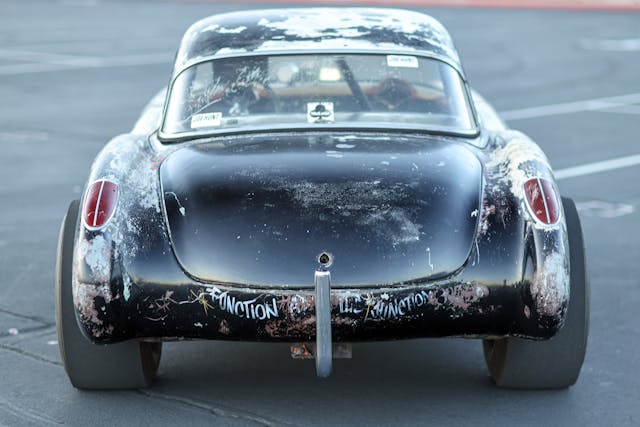
Because the car’s real racing days were over, Carpenter worked on making the car more streetable without losing its racy edge. “I had to rebuild the front end, the frame, and suspension. It was antiquated and sketchy. I don’t know how that guy dared to drive down the track,” said Carpenter. The straight axle, still of unknown origin, was rebuilt and it also got some much-needed front brakes, as Sandie’s 1960 Corvette donated its stock drums when it was upgraded to discs. The 327 is linked to an M-21 four-speed by way of an Ansen NHRA blowproof bellhousing with a Hurst shifter. It sends power to a Pontiac/Olds 9.3-inch rear axle fitted with a spool and 5.38:1 gears. Like we said, it still has plenty of race car manners.
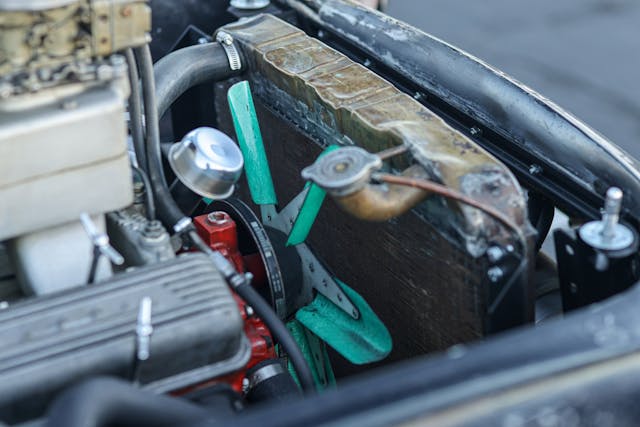
Carpenter has done quite a job in making this car look as a survivor race car should, despite having to make plenty of repairs. As much as we love its current look, both Carpenter and all of us here at Hagerty Media would love to see how it presented in its heyday. If you remember seeing this car on the dragstrip when it was a quarter-mile contender, please share your story and we’ll help you get in touch with Carpenter so that he can be a caretaker of not only the current car, but also its racing legacy.
***
Check out the Hagerty Media homepage so you don’t miss a single story, or better yet, bookmark it. To get our best stories delivered right to your inbox, subscribe to our newsletters.


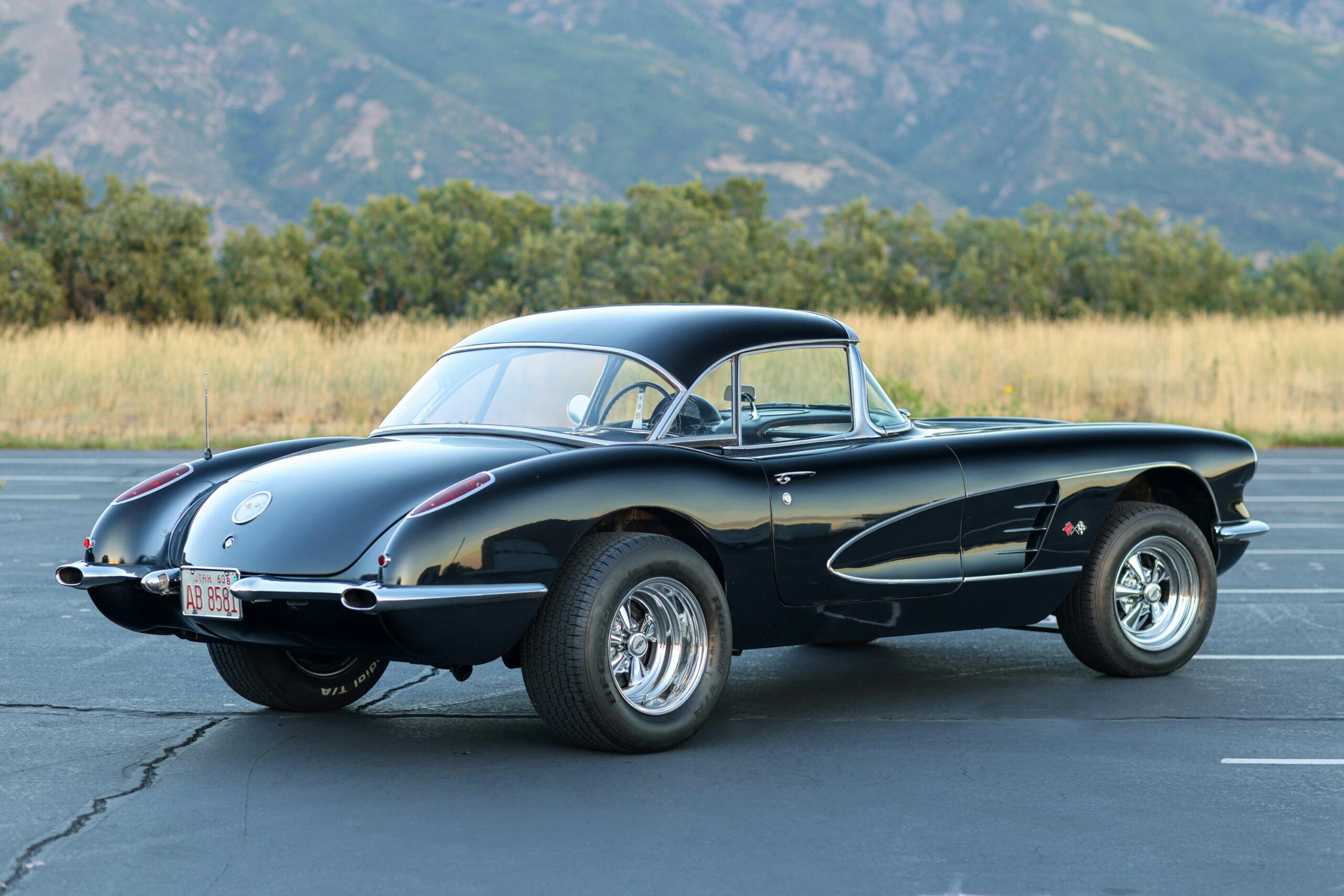
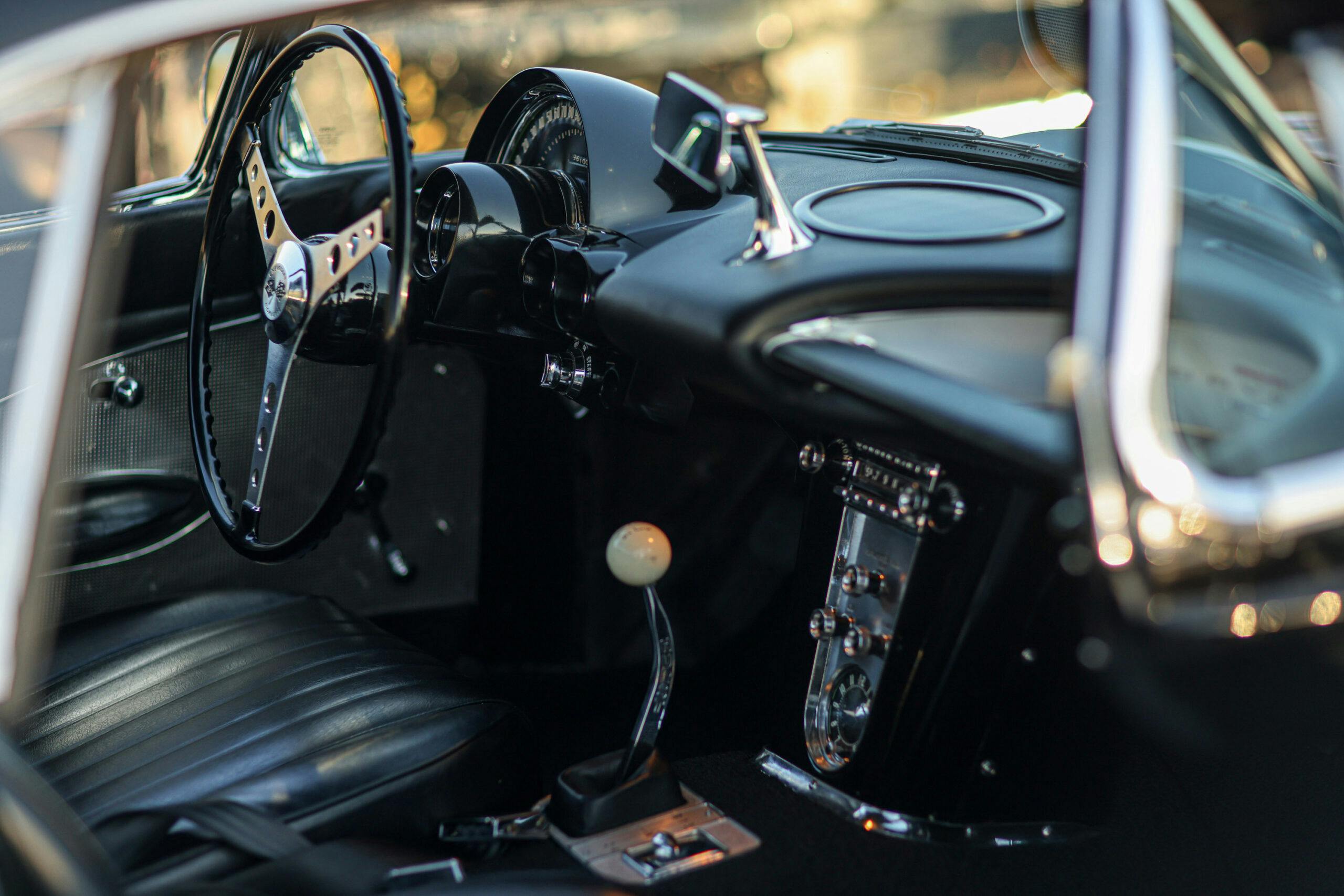
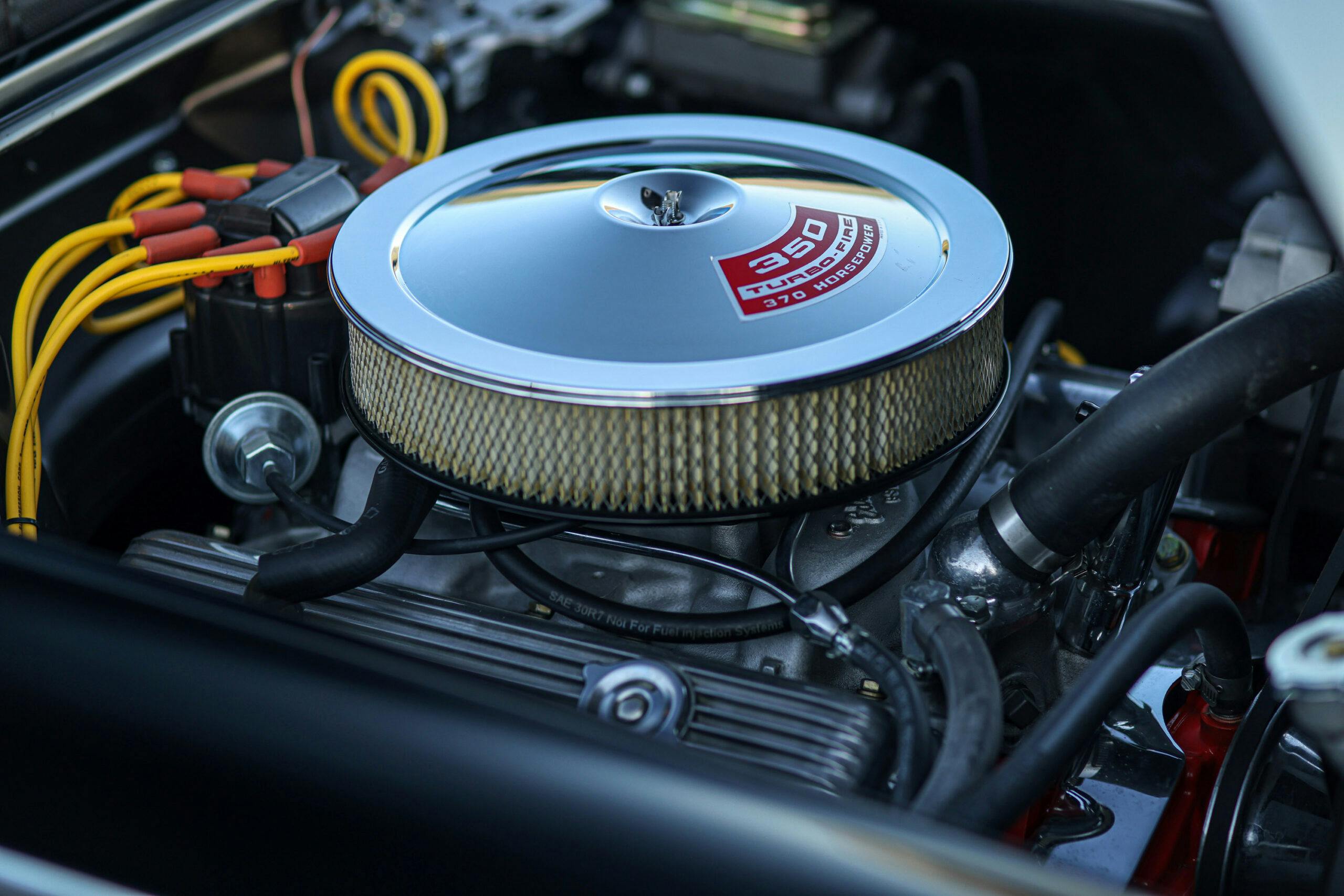

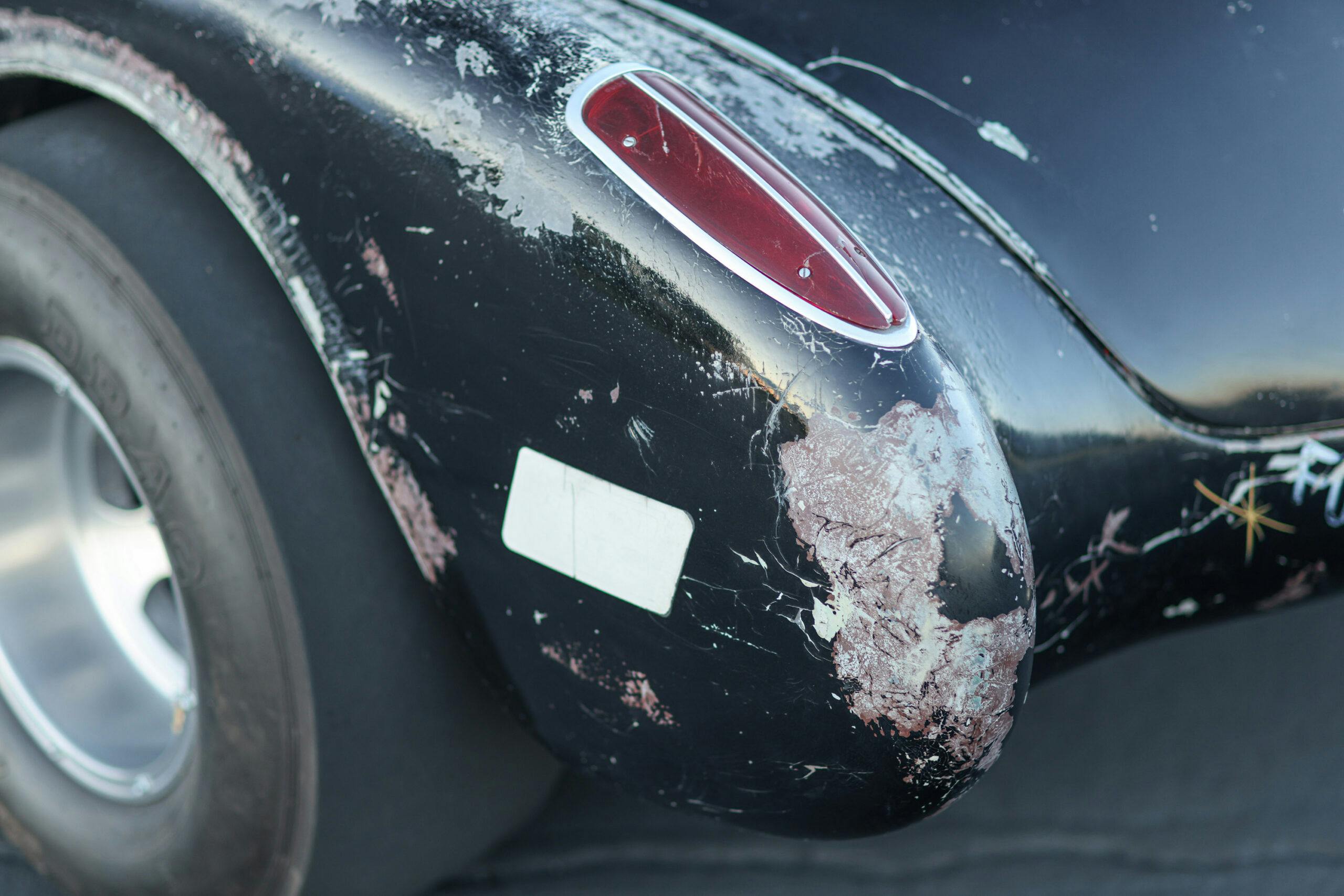

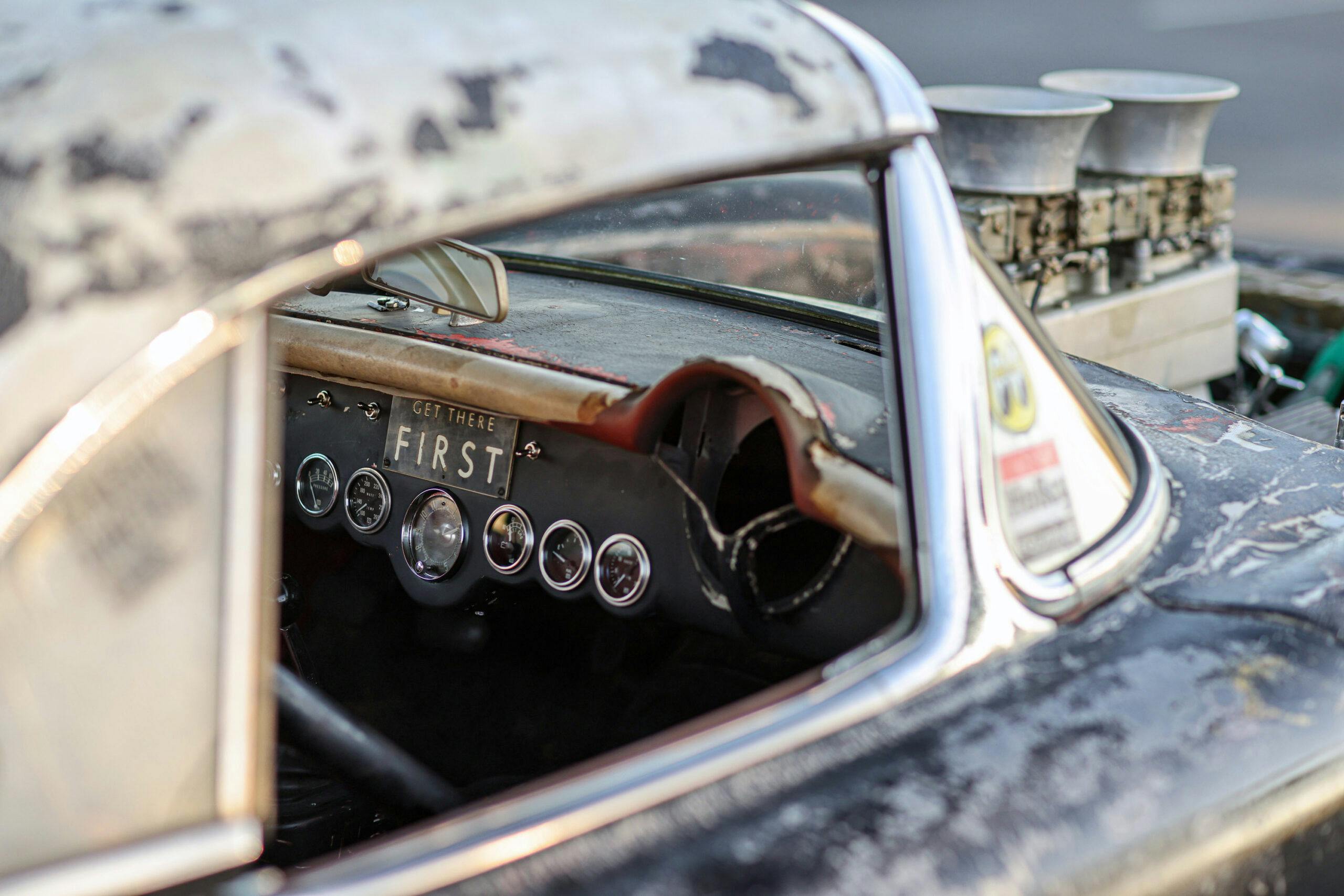
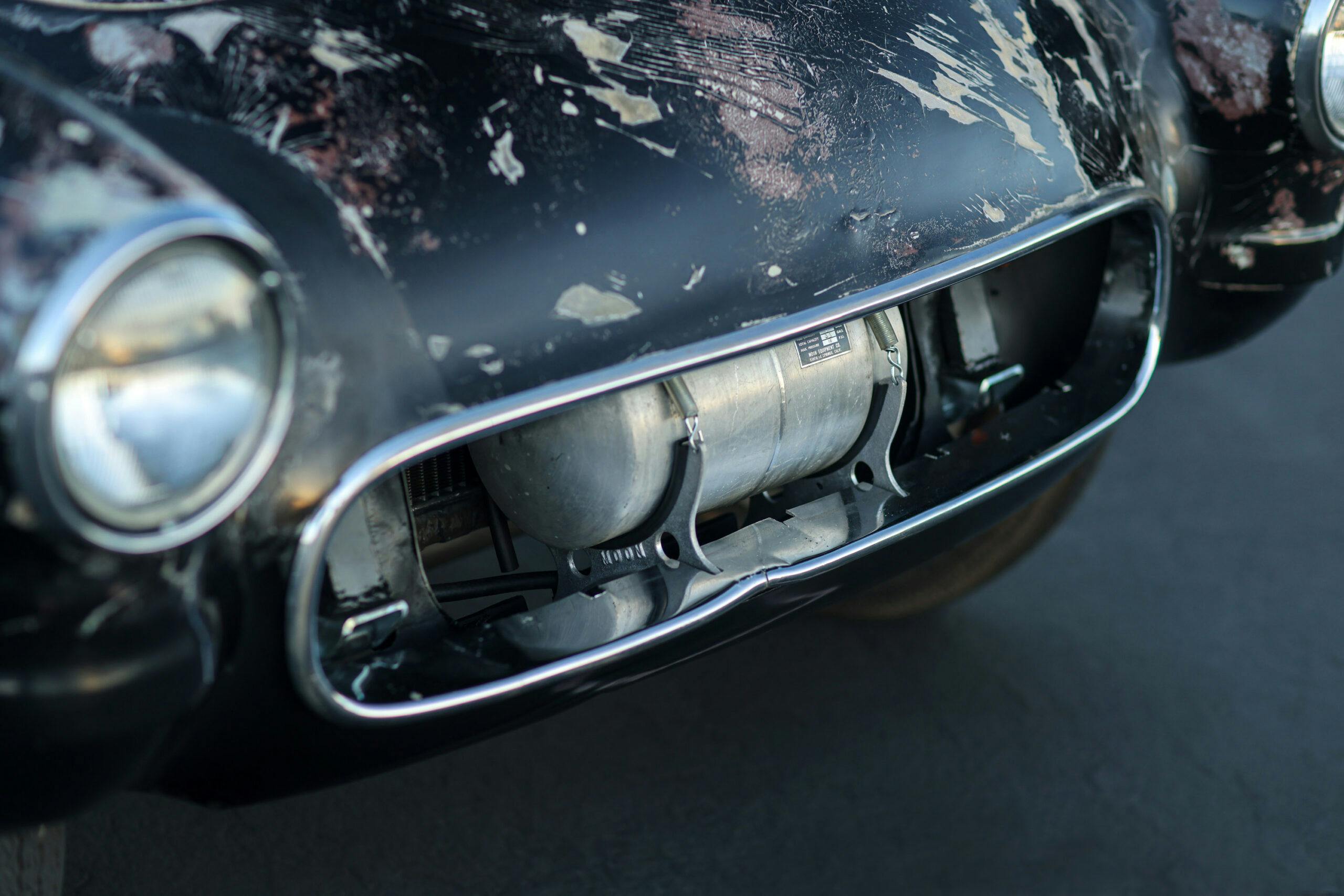
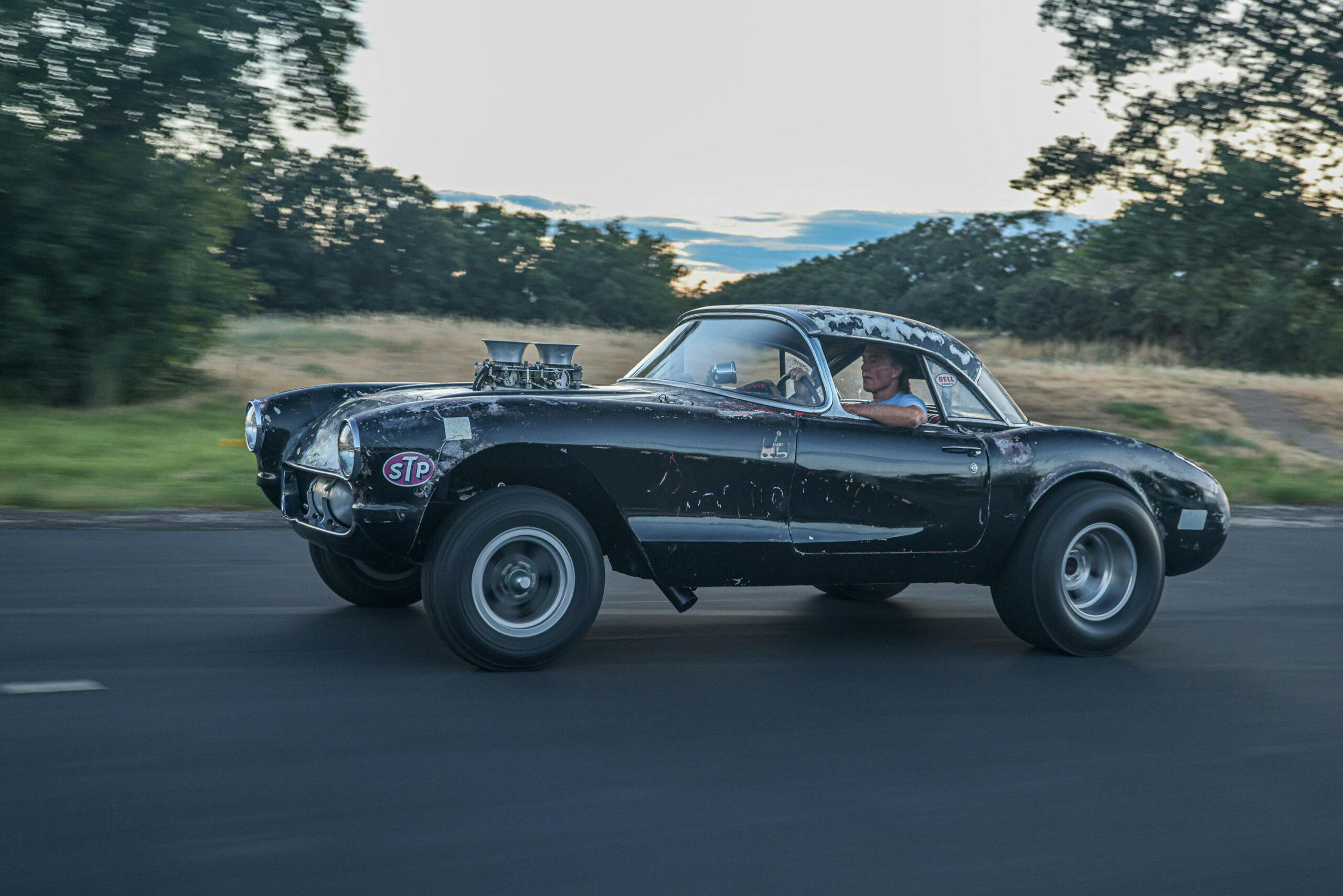
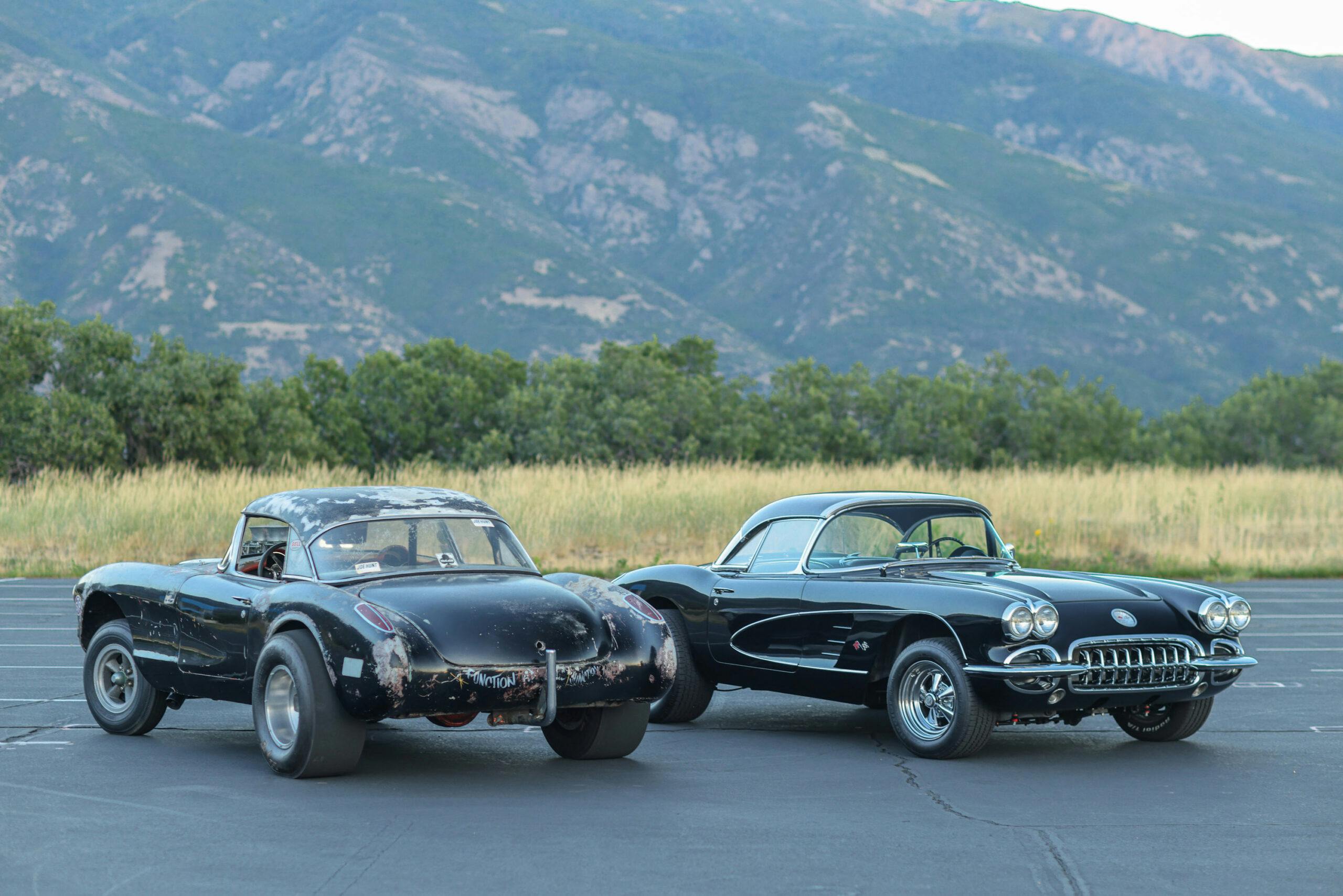
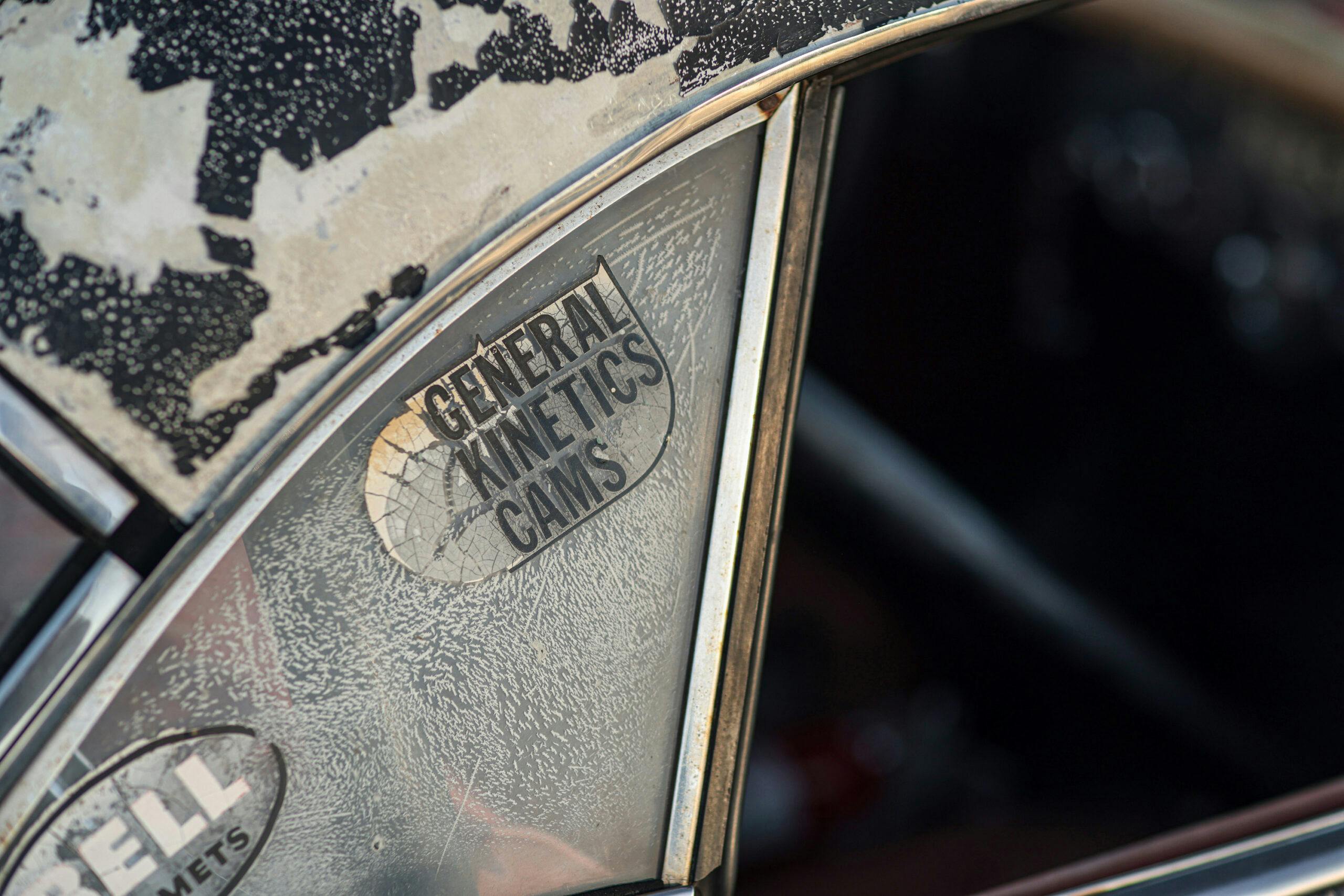
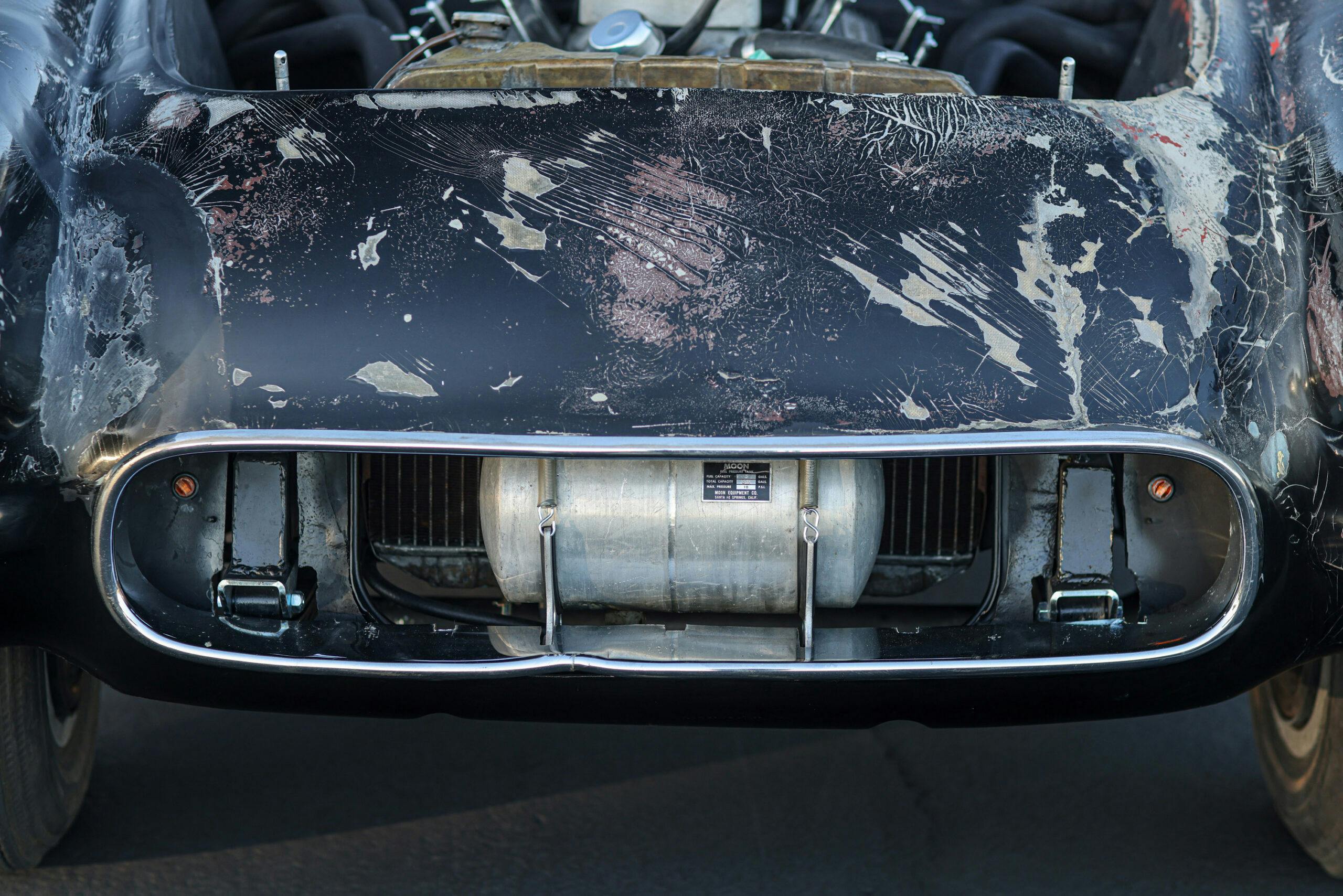
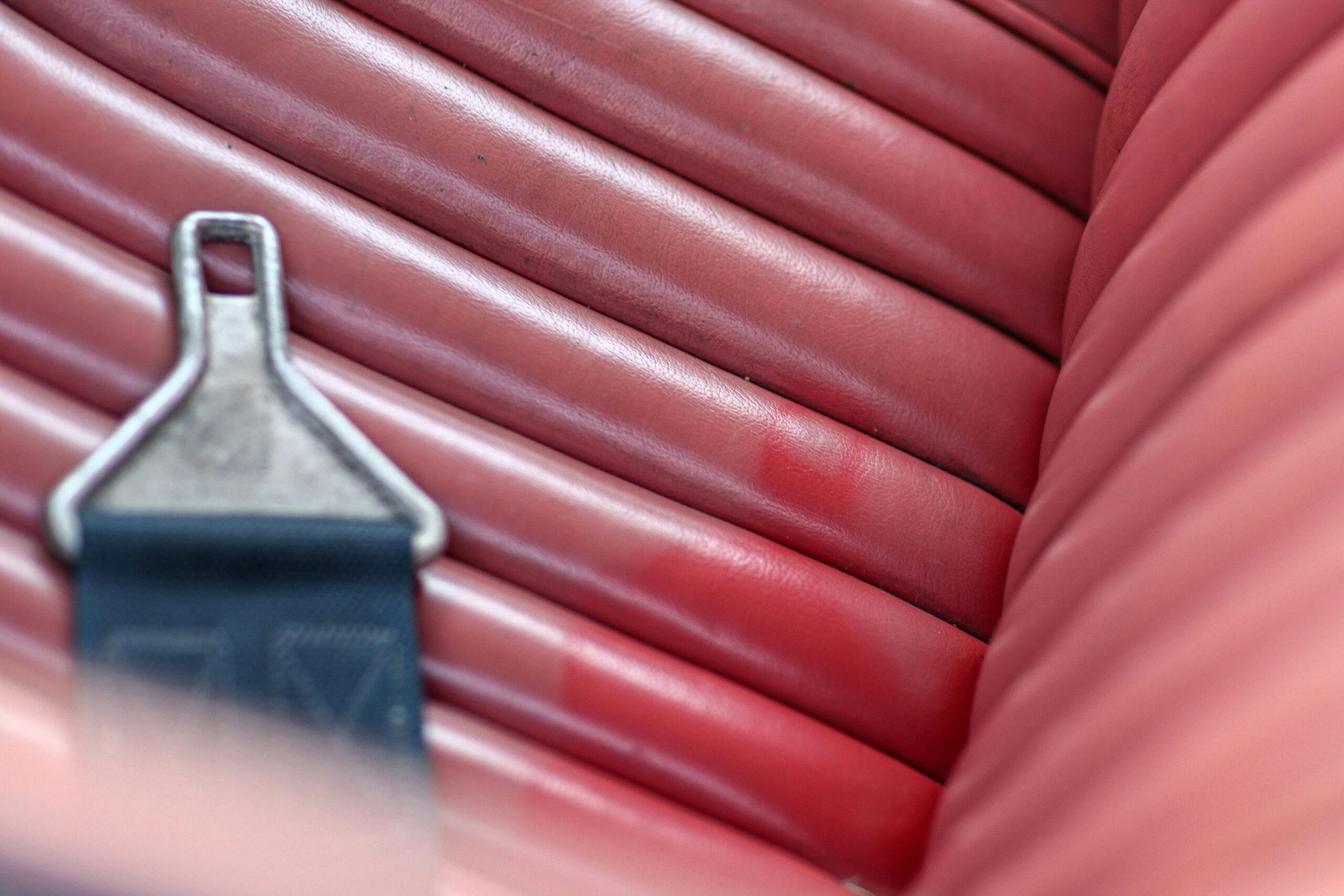
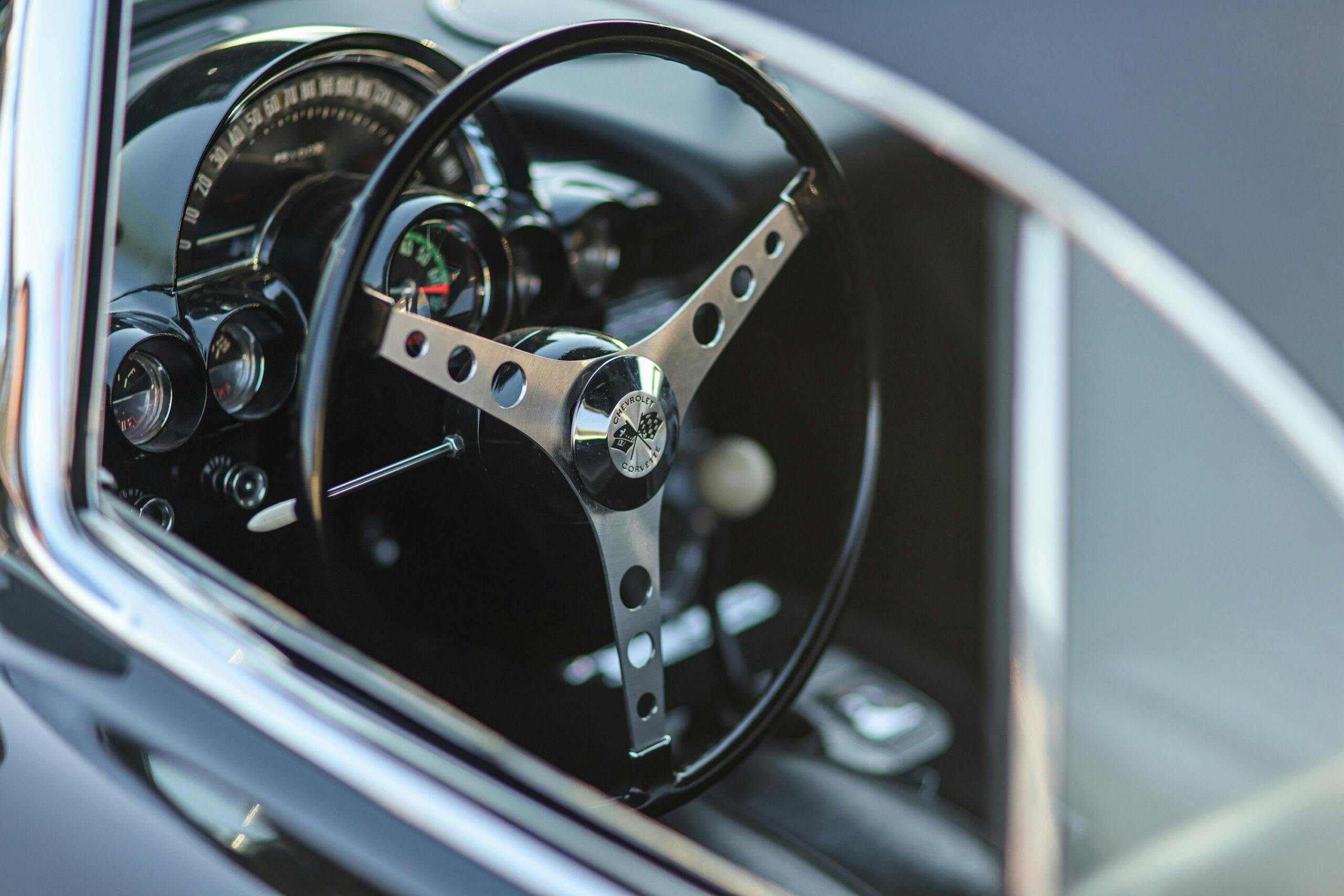
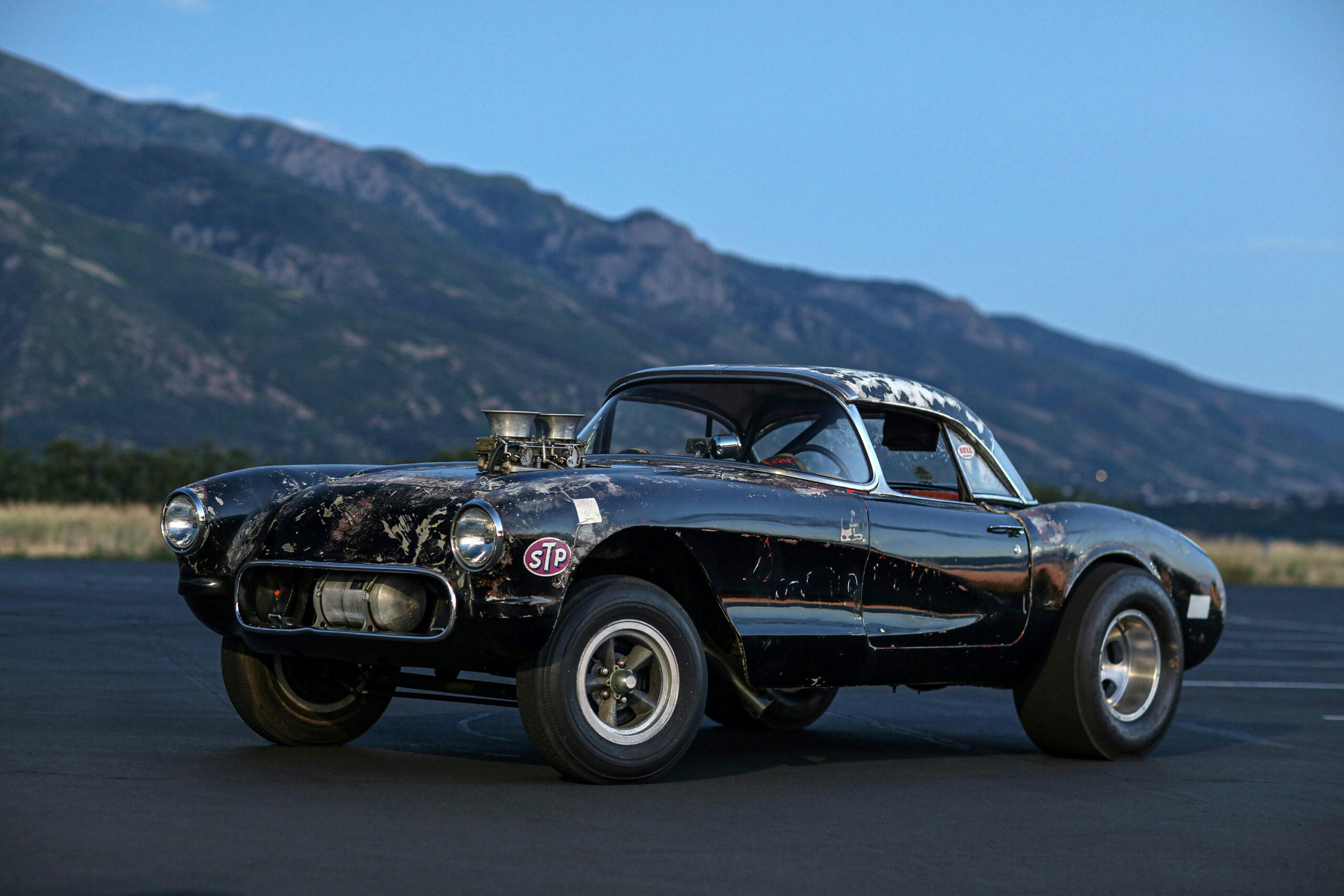


Try posting photos on the jalopy journal website, there are guys there that love to hunt down car history.
Thanks Chris. I did post a thread on that site not long after I bought the car. I had some good suggestions and feedback but nothing panned out
I hope it ran at Half Moon Bay or Fremont.
Great story! A college buddy of mine back in the early 70’s had a very similar car, but with a big-block. Your pictures brought back fond memories of my buddy and his car.
– Jim
I seem to remember a Corvette that looked very much like this one at the Lakeland Drag strip in Memphis. I think it had Colman Moody on the side, but I definitely could be wrong. Anyway, it was a screamer! circa 1963.
Did the car have a Pontiac rear end?
Yes it had and still does have the Olds / Pontiac 9.3 differential with a spool and 5:38 gears
That’s one awesome job you did on that old war horse ‘Vette, Mr. Carpenter. Takes me right back to rural Indiana and Indianapolis during my ’60s/’70s childhood (born ’59, dad lifelong GM employee @ the Delco Remy plant in Anderson IN). C1s were affordable then and many became drag racers. Perhaps if you reach out to the staff at Indianapolis Raceway Park in Clermont, and the Indianapolis Motor Speedway Museum they might be able to shed some light on the history of your ‘Vette. There’s old timers at both places that love these kinds of mysteries. Good luck!
Thanks Ryan. Thats a great suggestion. I will try to reach out to them. I have focused my search in the California area because 1st that’s where I bought it and 2nd it had the “Grump Hump” hood scoop which I understand to be a California rule where as the East Coast cars did not have them. The car could have ran on the East coast and then came to the West coast for a short time? If only these cars could talk. haha
I still love the sound of a 1953-55 Blue Flame six Corvette.. 57’s were great lookin even tho the 283 was the mill
My first Corvette was a 57 283 duel quad car. Brings back the memories.
Nice job Larry
That looks a lot like a car that was raced succesfully by Bo Laws back in the 70’s. That was a great racer.
Any chance this car came from the SF Bay area?
I purchased the car from the SF Bay area and was told that’s where the car was from mid 80’s till 2017 when I bought it
Intriguing: in the ’70s I had what was supposed to be a ’57, also with the fender scoops removed, a straight axle, and a missing grille (that had been recessed via brackets), radiused rear wheel openings, with a hard top. Had no engine or trans, and an Olds rearend. But it was a faded red and I don’t recall its hood being cut. Last saw it after I’d sold it, sitting on a used car lot in the San Fernando Valley. I can’t recall who I bought it from but it would probably have been someone in the Van Nuys area. I sold it unfinished to do something else. It’s unusual to remove the fender scoops, so I gotta wonder…
Steve, I was excited when I read your comment thinking maybe it is the same car. I looked this morning on the area where the fender scoops have been removed, the gas lid door where it has been covered and the radiused rear wheel openings. I could not see any evidence of red paint under the cracking / chipping black paint which makes me think that those modifications were done prior to being painted black and were not done, then painted red. If only these cars could talk! haha
Regarding the 56 drag racing vette, In the late nineties, I bought some racing components from an Ohio fellow who campained a black vette with silver coves. He had pictures of his car lifting the wheels off the line. He ran a de-stroked(?) 266 V8 with a dual quad tunnel ram. He showed me an article featuring his car in an old Vette magazine (70’s or 80’s) with the launch pictures. If I recall correctly it ran 10:36 at 130+mph. Running a super high numerical rear end, he claimed redlines of 10K. I had purchased his hood, as I received it, It has a tall Harwood hood scoop that was added. I may be able to locate his name and old Phone number, at the time he lived in Canton Ohio. I can’t attest to the year of his vette, or even if it had a solid front axel, but it held a national record at the time the article was published. Not sure if he campaigned it nationwide, but this guy was serious!
I remember seeing a car similar to this run in Illinois Oswego , US 30 , and Wisconsin Union Grove Drag Strips .There was a show here in Illinois called Motorsports Unlimited with Bill Wildt + Chuck Itsentauer , Bill knew alot about this subject . If he’s still around , contact him , he might know . Good luck !
I love this Vette!
Everyone I have shown it to has said the same thing:
I wouldn’t change a thing!”
had revelle or amt back in 66 67 is this real thing
My father raced a 56 back in the late 60’s in the North East at New England Dragway. I’ve always wondered where it went. Wasn’t a straight axle at the time but he did cut the fender cove scoops out and filled them in. It was an injected small block four speed with i think a Pontiac rear. Long shot but i do have the VIN tag from it. Was maroon on the street and when raced painted yellow had red interior.